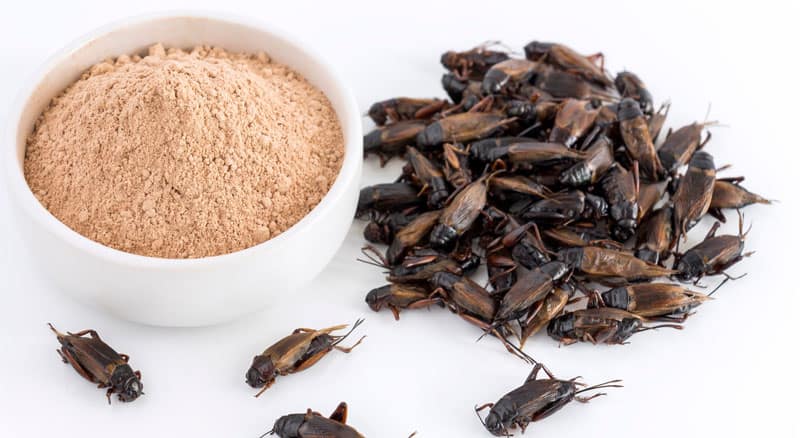The European Union has approved the use of powdered crickets in flour-based foods for public consumption, despite a lack of conclusive data on human allergies regarding the insects.
Due to the “inconclusive” allergy data on the bugs, manufacturers won’t have any specific requirements to list the powder in foods’ ingredients.
The new statute allowing the bugs to be used in human foods goes into effect on Tuesday.
Three years ago, the European Food Safety Authority launched a review regarding the use of partially defatted house cricket powder.
The decision to incorporate the insects into human foods comes after the agency found that mass market consumption of the material is “safe under the proposed conditions” of use levels.
Cricket powder will now be permitted in a number of food products.
According to the new regulation, those foods include multigrain bread, crackers, cereal bars, biscuits, beer-like beverages, chocolates, sauces, whey powder, soups, and other items “intended for the general population.”
Cricket One, a company that produces powdered bugs, insists that the insects are “nutritionally more efficient” and serve as a more reliable “source of alternative protein” than livestock.
The company submitted the original application to have cricket powder included in human foods.
The regulation also referenced “limited published evidence on food allergy related to insects in general” and connected Acheta domesticus, the species of house cricket in question, to several “anaphylaxis events.”
The European Food Safety Authority concluded that “consumption of this novel food may trigger sensitization” to the insect’s proteins and recommended further study.
According to the regulation, the European Commission decided that no specific labeling requirements should be included in the EU list of authorized novel foods because evidence linking cricket powder to allergic reactions is “inconclusive.”
Nevertheless, the New York Allergy and Sinus Centers found that “several allergic reactions to crickets” have been reported in the past two years.
Individuals allergic to shellfish such as shrimp, crabs, and lobsters “may develop an allergy to crickets” because the species share many of the same proteins.
“While crickets are considered safe and healthy to eat, for those who are allergic, they pose a serious threat,” the group said.
“When ingested, crickets can cause anaphylaxis and other serious reactions.”
Proposals for the increased consumption of crickets and other insects occur as many policymakers voice concern about the impact of meat production on “climate change.”
Amanda Little, a professor at Vanderbilt University, asserted that the acceptance of insect consumption in the EU would not “translate to bugs in your burgers and mealworms in your macaroni,” but rather allow them to become a feedstock for other protein sources.
The World Economic Forum (WEF) has frequently raised the possibility of finding alternative food sources to decrease carbon emissions.
“Insects are a credible and efficient alternative protein source requiring fewer resources than conventional breeding,” said one article from Klaus Schwab‘s globalist organization.
“Studies suggest that for the same amount of protein produced, insects, mealworms, in particular, require much less land than other sources of animal proteins.
“A study on crickets suggests they are twice as efficient in converting feed to meat as chicken.”
Another article from the WEF claimed that the “demand for protein will exceed our ability to procure it” by 2050.
The WEF is aggressively pushing the switch to insect consumption to fight “climate change” despite similar claims from environmentalists that have been repeatedly disproven over the past several decades.
“For our long-term survival, we’re going to need to increase our food output and decrease our carbon emissions at the same time,” the group said.
“The answer requires real innovation about food production and what we think about food.”
READ MORE – WEF Advisor: ‘We Don’t Need Vast Majority of Population’

Our comment section is restricted to members of the Slay News community only.
To join, create a free account HERE.
If you are already a member, log in HERE.
Recommended